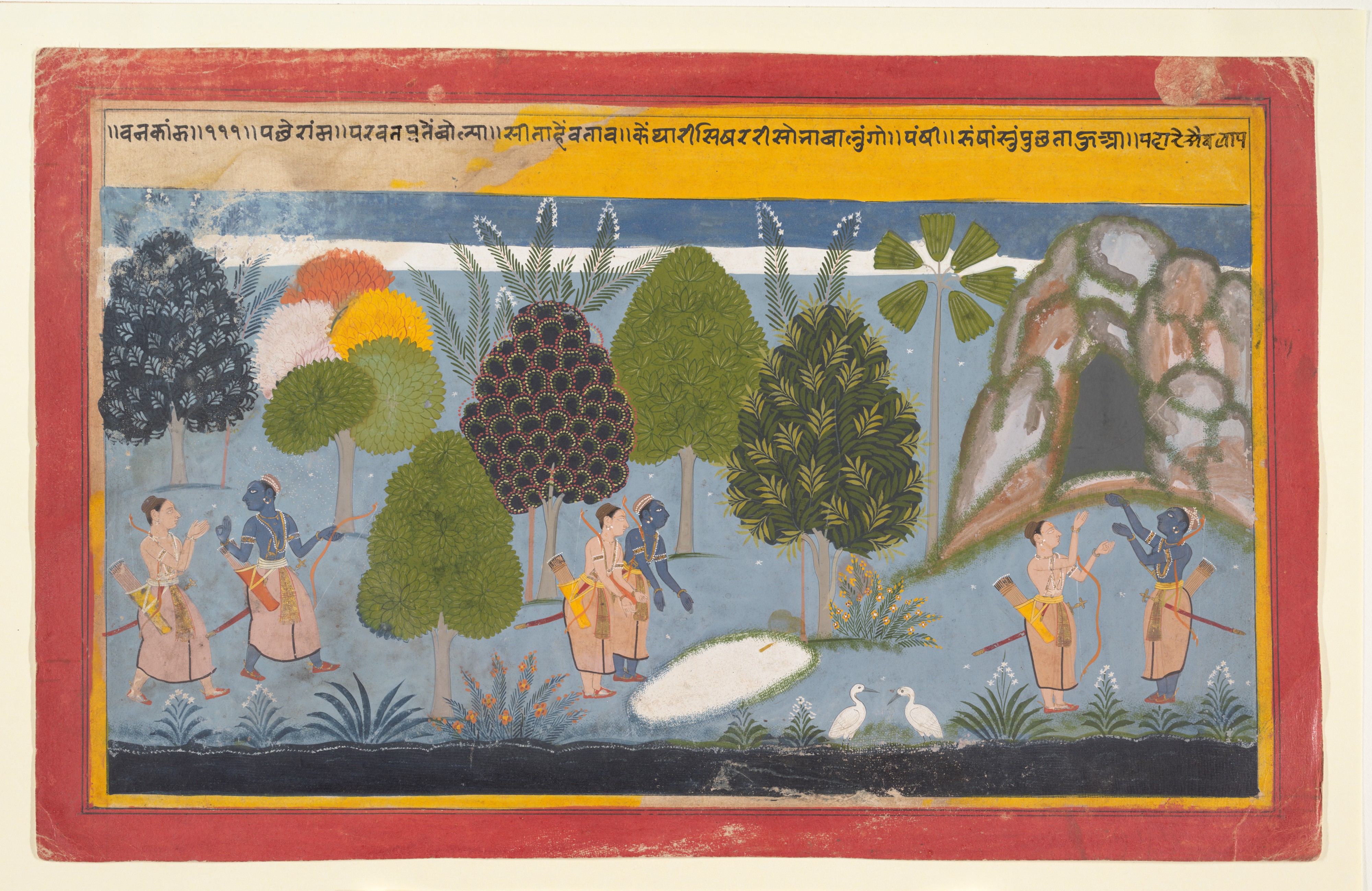Dear DailyArt users, if you need artsy calendars for 2020, we have something for you! Check what you can buy in our new DailyArt online shop: Women Artists Monthly Wall Calendar, Masterpieces Monthly Wall Calendar, and Weekly Desk Calendar, with beautiful masterpieces and short stories about them. They can be amazing Christmas gift for your family and friends; we ship worldwide!
The Ramayana is a poem from around the 5th century BC that describes the life and journey of Lord Rama, the seventh avatar of the Supreme Hindu God, Vishnu. It is revered as one of the two greatest works of South Asian literature. In the Ramayana, Rama's wife Sita (an incarnation of the Goddess Lakshmi) was abducted by Ravana, the evil ten-headed ruler of Lanka. This painting from the royal atelier of Mewar in Rajasthan describes the events following Sita's abduction.
Rama and his brother, Lakshmana, are shown here searching desperately for Sita in the forest of Dandaka. Rama and Lakshmana appear three times in the painting, as they look for Sita through different terrains. It is common for Indian paintings of this period to have a single artwork contain multiple scenes when conveying a narrative. The animated gestures of the brothers highlight their distress as they comb through the foliage and the caves in their attempt to find Sita.
The writing on the top of the painting is Sanskrit text from the Ramayana describing Rama's desperate pursuit of his beloved wife. The blue background conveys the grave circumstances. There is also pair of white storks near the bottom that alludes to the bond of lovers and further emphasizes Rama's grief-stricken heart.
Between the 16th and 18th centuries, many paintings emerged from the Mughal, Rajasthani, and Pahari schools depicting scenes from the Ramayana. The poem continues to enjoy immense popularity today in both religious practice and a myriad of art forms.
- Maya Tola
P.S. To see how Lakshmi, the goddess of wealth was presented in art, click here!


 Unknown Artist
Unknown Artist